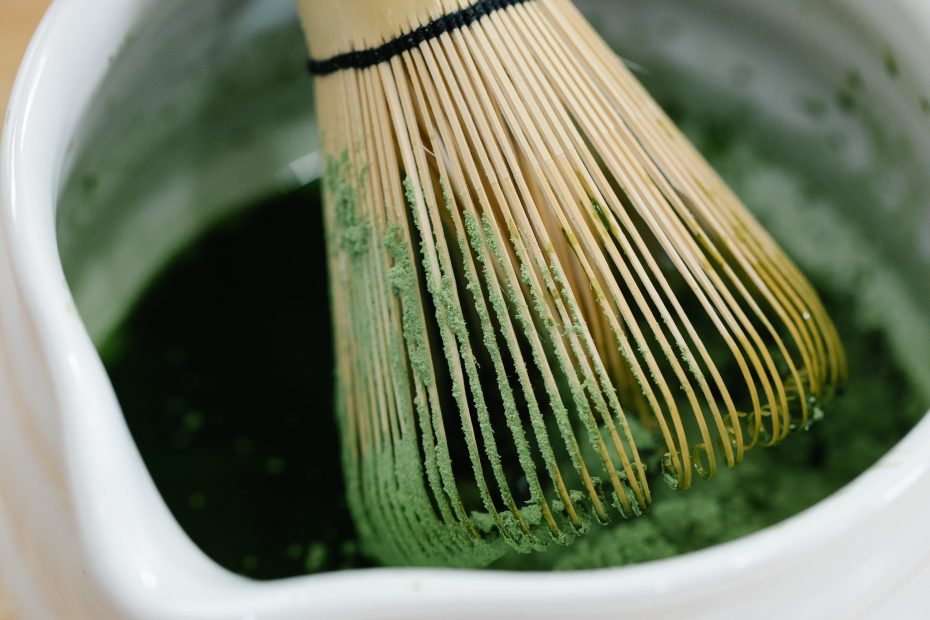Matcha Tea, Green Cocoa Properties And Recipes
One of the teas that is most talked about and used most in cooking is matcha tea, also called green cocoa because of its color and texture. In fact, matcha comes in powder form, not leaf form, and is a Japanese green tea.
It has a very distinctive, sweet flavor reminiscent of seaweed, spinach… that’s why, I’m honest, I didn’t like it very much at first, however, I’ve always found it a good ingredient for original recipes, such as matcha cappuccino or matcha panna cotta.
Besides being powdered, matcha tea has another element that makes it easily distinguishable from other teas: its color, a characteristic given by the special and ancient Japanese method of cultivation, kabuse. The tea plant is covered so that it remains in semi-shade (only 50 percent of the sun’s rays reach the leaves), developing a bright color and a particularly sweet flavor during infusion. Tea leaves grown in this way can be the basis of matcha tea as well as other Japanese green teas such as genmaicha, Gyokuri, and houjicha.
Matcha is the tea used in the Japanese tea ceremony and is also very fashionable today because of its properties.
The benefits of matcha tea
There is a lot of talk about the beneficial properties of matcha–the tea leaves, once harvested, are directly ground and processed into powder without the usual withering, rolling and drying steps. This allows matcha to have a higher antioxidant content than other green teas. In addition, matcha tea is rich in vitamins, minerals, chlorophyll and (beware for those with insomnia!) caffeine/theine (almost as much as a cup of coffee).
Matcha prevents aging, is a drainer and detoxifier, soothes the mucous membranes of the intestines and stomach, and appears to help prevent the damaging effects of ultraviolet rays due to its high polyphenol content. The same properties as green tea, but enhanced.
Nutritionist Ian Marber told the Telegraph, “The leaves contain 137 times the antioxidant content of regular green tea, polyphenols and several amino acids, such as l-theanine, which reduces physical and psychological stress, and glutamic acid, which acts on the central nervous system.” Marber would eat a spoonful of matcha every morning by mixing it with yogurt, chia seeds (seeds derived from the sage hispanica plant) and berries.
Given its potential, matcha is also used today for less traditional purposes such as scrubs and face masks.
Preparation of matcha tea
Matcha tea is not prepared by infusion like other teas, but through the use of a special bamboo attachment, the chasen. There are then two methods of preparing matcha: usucha (light, more similar to the Western taste) and koicha (thick).
In general, the advice is to preheat a cup with hot water, then drain and dry it. Place half a teaspoon (1 take of chasaku) of matcha in the cup (if there are any lumps, sift the tea powder through a strainer), add 100 ml of 80° C water and whisk vigorously with the chasen or a whisk drawing “m”-shaped movements with your wrist (N.B. Do not whisk in a rotary direction!) until a thick foam forms on the surface. At this point the matcha is ready.
Contraindications
Since it has a high caffeine/theine content, it is best not to abuse matcha and check that it does not interfere with supplements or medications you are taking. My grandfather, for example, takes medicine so he cannot eat or good anything that is green because the chlorophyll interferes with the active ingredient in his medicine!
